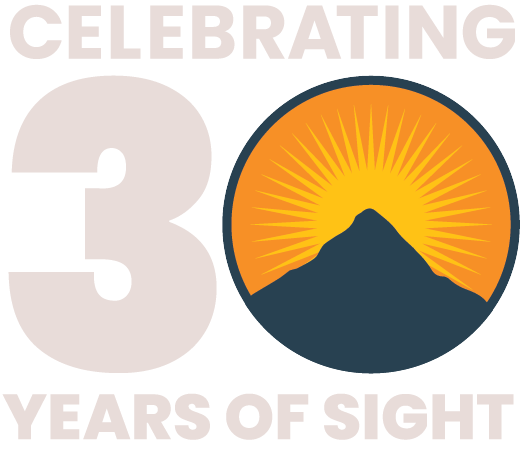The Connection Between Eye Health and Food Insecurity
Eye injuries and loss of vision for agricultural workers like ChandBee cause a domino effect: as fewer workers harvest food, less food makes it to market. In 2015, the United Nations’ member states adopted the 2030 Agenda for Sustainable Development. This agenda sets 17 wide-ranging and ambitious goals. According to the 2021 UN Resolution on Vision, eye care is instrumental in achieving eight of them. This blog illustrates how HCP Cureblindness is contributing to this global solution.
In the fields outside Hyderabad, India, ChandBee – a farmer and loving mother – worked alongside her husband to provide for their children. But when ChandBee’s vision started fading at the age of 25, her world began to crumble. ChandBee was no longer able to work and, with her family income cut in half, she had to make the impossible decision to send her children to an orphanage.
Four long years passed until a glimmer of hope shone through the darkness. Thanks to HCP's partner, the L.V. Prasad Eye Institute, ChandBee underwent a life-changing corneal transplant. Her sight was restored, and with it, the chance to resume farming and be reunited with her children.
However, the impact of ChandBee's vision loss extended far beyond her family's struggle. In the close-knit community, her experience shed light on a troubling reality. Eye injuries and blindness among agricultural workers like ChandBee trigger a domino effect: fewer hands working the fields results in less food reaching the market and more people going hungry. This ripple effect touches not only families of those experiencing vision loss but entire communities across vast regions.

In 2015, the United Nations recognized this connection between eye care and food security with the adoption of the 2030 Agenda for Sustainable Development. The agenda sets 17 wide-ranging and ambitious goals to support the health of people and the planet. According to the 2021 UN Resolution on Vision, eye care is instrumental in achieving eight of these goals. HCP’s contribution to this global effort sits where goals two and three intersect:
Goal two is to end hunger, achieve food security, improve nutrition, and promote sustainable agriculture.
Goal three is to ensure healthy lives and promote well-being for all at all ages.
As ChandBee’s case shows, food sovereignty and health are inextricably linked. People need good health – as well as healthy food systems – to ensure access to nutritious foods. Unfortunately, access to health care (especially eye care services) remains out of reach in rural regions of low- and middle-income countries, where most residents work in agriculture. This lack of access to eye care makes it more challenging to get diagnosed and treated for routine corneal scratches and eye injuries.

With proper care, most patients fully recover. Without it, many go blind.
HCP Cureblindness recognizes the urgent need for sustainable solutions. That’s why one of our main areas of focus is building a rural eye infrastructure. By empowering local healthcare providers with the skills to diagnose and treat eye injuries and diseases, HCP creates a lasting impact and bolsters food security in these remote agricultural regions.
Most importantly, we prevent patients like ChandBee from losing sight in the first place, helping keep families intact and communities united.




